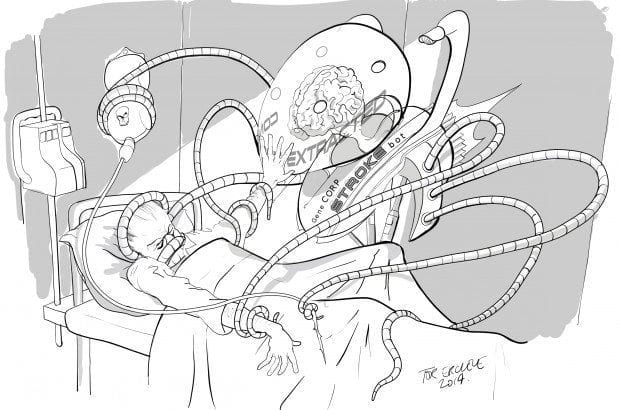EMA June 2014
Issue 3 (Vol. 26) of EMA Journal for 2014 was published online on 8 April. Editorial overview by Andrew Gosbell & Geoff Hughes
Bittersweet NEAT (#FOAMed) Discussion on the future of the National Emergency Access Target (NEAT) is timely given ACEM’s concerns (ACEM media release May 2014) over the recent Australian Federal Government’s budget announcements, which includes the scrapping of the National Partnership Agreement for Improving Public Hospitals.
Dr Gerben Keijzers (@GerbenGerbs) in his commentary argues that there needs to be a ‘sweet spot’ for NEAT, as patients should not be in the ED for prolonged times but some should not be ‘shipped out’ just to meet a time target. Quality of care is of upmost importance but is complex and difficult to measure. Performance indicators, such as NEAT, are easier to measure but are, at best, only surrogate markers of quality. A key issue is that the parameters of the current NEAT are not evidence-based.
This lack of evidence-base for NEAT is also a concern for Dr David Green in his personal view. While it is acknowledged that NEAT has assisted with ED overcrowding, Green argues that the current target is resulting in ED doctors spending less time with patients and complex cases being diverted from ED. This has risks for maintaining the ED workforce, quality of registrar training and standards of patient care. Quality of patient care must be prioritised while ensuring access to care is maintained. This requires more sophisticated measurements of the quality of emergency medical care.
#smaccGOLD vs The Rise of the Synthetics (#FOAMed ) In the latest dispatch from the FOAM Frontier, Spiegel (@EMNerd_), Johnston (@Eleytherius), Ercleve (@Ercleve) and Nickson (@precordialthump) transport us again into the future; this time to a tense rivalry between the Time Travel™ Guild and the Astro-Archaeology Society in seeking to understand the ‘gurgling infancy of the FOAM paradigm’. The Time Travellers point to the #smaccGOLD Singularity as a pivotal point in FOAM history, when global communications on critical care took on a new veracity. The Astro-Archaeologists dismiss these fanciful accounts of a Singularity event, instead seeking tangible truths in the forgotten story of ‘The Rise of the Synthetics’. This might explain how the HINTSynthetics, developed during the time of The Great Lytic Wars to consent patients for tPA, were rebirthed and introduced to the FOAM world as a simple yet powerful tool (HINTS exam) for diagnosis of posterior fossa stroke.
Shock Index as a predictor of critical bleeding post trauma (Abstract) Early detection of haemorrhagic shock could reduce mortality, but can be difficult due to compensatory mechanisms and is particularly challenging in pre-hospital settings. Shock Index (SI), defined as heart rate divided by systolic blood pressure, is a simple to calculate clinical sign which is consistently associated with blood loss. This systematic review, from Olaussen et al, explores the use of SI in predicting critical bleeding (i.e. requiring transfusion of ≥4 units pRBC). Retrospective analyses suggests that SI≥0.9 following trauma is indicative of patients with massive haemorrhage, however a ≥1.0 cut-off has a higher specificity, is simpler to determine and so may be more useful for pre-hospital clinicians. Prospective validation of SI in pre-hospital phase to predict critical bleeding is needed
EDs of the future (#FOAMed) Despite the rapid development of emergency medicine as a key component of modern healthcare systems, there is ongoing and increasing pressure on the performance of emergency health services which is primarily associated with system-wide congestion. Multiple factors – growing demand, increased scope of care, blocked access to inpatient beds and constrained public finances – contribute to this congestion and require a coordinated approach to evidence-based policy. This perspective, by Fitzgerald and colleagues, aims to stimulate discussion on the future design and functioning of emergency health services by considering what is known about the problem of congestion and proposing a rationale for future strategic approaches to address this significant challenge
Numeracy skills count in the ED (#FOAMed) Poor numeracy can contribute to errors in: medication; interpretation of diagnostic results; calculation of fluid balance, nutritional needs, IV fluid rates, weight, BMI; data recording and understanding research evidence. This is exacerbated in a busy and hurried ED environment. Eley and colleagues, in this perspective on their research into clinician numeracy skills, contend that both systems and educational approaches should be used to address poor clinician numeracy skills and improve patient safety. Pathology and pharmacy services should simplify instructions and report result as whole numbers. While all clinicians need an increased self-awareness of their deficiencies in numeracy, along with the provision of training that incorporates procedural and conceptual components.


